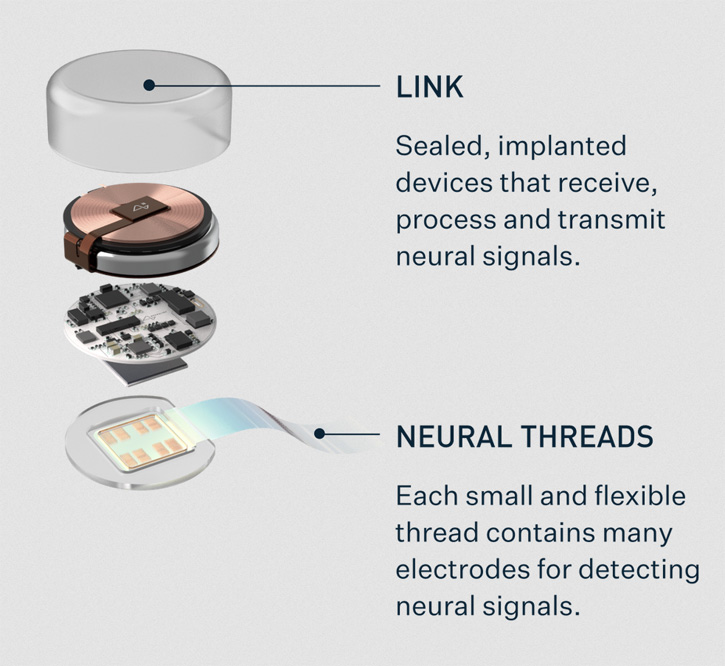
11th April 2021 Monkey uses brain implants to play Pong Neuralink, co-founded by Elon Musk in 2016, has revealed a macaque with chips embedded on each side of its brain, playing a mind-controlled version of the 1972 video game, Pong. Although established in 2016, Neuralink remained secretive about its work until July 2019, when Musk presented his concept for a new brain–machine interface (BMI). Not only would this help physically diseased or injured people, Musk believed it could also treat mental illness – and even be used by healthy individuals who might wish to enhance themselves. A prototype in August 2020 demonstrated the Neuralink technology in a pig. This coin-sized chip, featuring a read/write link, contained 1,024 channels with a wireless megabit data rate and all-day battery life. Brain signals conveying the pig's sense of smell could be seen in real time. The FDA had by then approved it as a breakthrough device, allowing use in limited human trials under the US federal guidelines for testing medical devices.
This week, Neuralink announced its latest milestone. The macaque seen here, a nine-year-old male called Pager, has a fully-implanted neural recording and data transmission device, known as the N1 Link. In fact, there are two: one in the left motor cortex (which controls movements of the right side of the body) and another in the right motor cortex (which controls the left side of the body). By modelling the relationship between neural activity and intended movement directions, researchers at Neuralink identified the patterns needed for calibrating a "decoder" to predict the direction and speed of an upcoming or intended movement. Tests using this bilateral system enabled Pager to move a cursor on a computer screen with neural activity alone. In the second half of the video, we see him able to control a paddle during a game of MindPong. The N1 Links, which have a combined total of over 2,000 electrodes, can be paired with an iPhone. "Neuralink's technology builds on decades of research," the company said in a statement. "The BMI systems used in previous studies have no more than a few hundred electrodes, with connectors that pass through the skin, requiring a technician or caregiver to 'connect' the BMI. Our mission is to build a safe and effective clinical BMI system that is wireless and fully implantable that users can operate by themselves and take anywhere they go; to scale up the number of electrodes for better robustness and higher information throughput; and to automate the implant surgery to make it as rapid and safe as possible. Recent engineering advances in the field and new technologies developed at Neuralink are paving the way for progress on each of these key technical hurdles. "Our first goal is to give people with paralysis their digital freedom back: to communicate more easily via text, to follow their curiosity on the web, to express their creativity through photography and art, and, yes, to play video games. After that, we intend to use the Link to help improve the lives of those with neurological disorders and disabilities in other ways. "MindPong is an initial demonstration of the potential capabilities of the N1 Link. However, it's important to remember that it is a small slice of what our device is intended to achieve." Responding to the macaque demonstration, Musk tweeted: "First @Neuralink product will enable someone with paralysis to use a smartphone with their mind faster than someone using thumbs."
Comments »
If you enjoyed this article, please consider sharing it:
|







